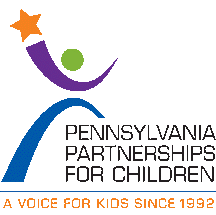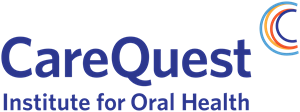- CMS: Medicare Program; Implementation of Prior Authorization for Select Services for the Wasteful and Inappropriate Services Reduction (WISeR) Model
- Public Inspection: CMS: Medicare Program: Implementation of Prior Authorization for Select Services for the Wasteful and Inappropriate Services Reduction Model
- CMS: Secretarial Comments on the CBE's (Battelle Memorial Institute) 2024 Activities: Report to Congress and the Secretary of the Department of Health and Human Services
- HHS: Patient Protection and Affordable Care Act: Marketplace Integrity and Affordability
- HRSA Announces Action to Lower Out-of-Pocket Costs for Life-Saving Medications at Health Centers Nationwide
- Public Inspection: HHS: Patient Protection and Affordable Care Act: Marketplace Integrity and Affordability
- Increased Risk of Cyber Threats Against Healthcare and Public Health Sector
- Eight Hospitals Selected for First Cohort of Rural Hospital Stabilization Program
- Announcing the 2030 Census Disclosure Avoidance Research Program
- CMS: Medicare Program; Hospital Inpatient Prospective Payment Systems for Acute Care Hospitals and the Long-Term Care Hospital Prospective Payment System and Policy Changes and Fiscal Year 2026 Rates; Requirements for Quality Programs; and Other Policy Changes; Correction
- CMS: Medicare Program; Hospital Inpatient Prospective Payment Systems for Acute Care Hospitals and the Long-Term Care Hospital Prospective Payment System and Policy Changes and Fiscal Year 2026 Rates; Requirements for Quality Programs; and Other Policy Changes; Correction
- CMS: Medicare and Medicaid Programs; Contract Year 2026 Policy and Technical Changes to the Medicare Advantage Program, Medicare Prescription Drug Benefit Program, Medicare Cost Plan Program, and Programs of All-Inclusive Care for the Elderly; Correction
- CMS: Medicare and Medicaid Programs; Contract Year 2026 Policy and Technical Changes to the Medicare Advantage Program, Medicare Prescription Drug Benefit Program, Medicare Cost Plan Program, and Programs of All-Inclusive Care for the Elderly; Correction
- CMS: Medicare Program; Prospective Payment System and Consolidated Billing for Skilled Nursing Facilities; Updates to the Quality Reporting Program for Federal Fiscal Year 2026
- CMS: Medicare Program; FY 2026 Hospice Wage Index and Payment Rate Update and Hospice Quality Reporting Program Requirements
Rural Hospitals Are Caught in an Aging-Infrastructure Conundrum

Kevin Stansbury, the CEO of Lincoln Community Hospital in the 800-person town of Hugo, Colorado, is facing a classic Catch-22: He could boost his rural hospital’s revenues by offering hip replacements and shoulder surgeries, but the 64-year-old hospital needs more money to be able to expand its operating room to do those procedures.
“I’ve got a surgeon that’s willing to do it. My facility isn’t big enough,” Stansbury said. “And urgent services like obstetrics I can’t do in my hospital, because my facility won’t meet code.”
Rural hospitals throughout the nation are facing a similar conundrum. An increase in costs amid lower payments from insurance plans makes it harder for small hospitals to fund large capital improvement projects. And high inflation and rising interest rates coming out of the pandemic are making it tougher for aging facilities to qualify for loans or other types of financing to upgrade their facilities to meet the ever-changing standards of medical care.
February is National Children’s Dental Health Month!
February is National Children’s Dental Health Month. This month-long national health observance brings together thousands of dedicated professionals, healthcare providers, and educators to promote the benefits of good oral health to children, their caregivers, teachers, and many others. The 2024 theme is “Healthy Habits for Healthy Smiles.” The American Dental Association has free downloadable posters, postcards, and flyers available on their website. You can also order physical copies of these materials to be shipped.
Pennsylvania Health Department Announces Five-Year Needs and Capacity Assessment Regional Prioritization Events
Every five years, Pennsylvania Department of Health’s Title V Maternal and Child Health Services Block Grant requires that the Bureau of Family Health conduct a state-level, comprehensive assessment of the health status of women, birthing people, children, adolescents, and children and youth with special health care needs to identify the priority health needs that will guide state and local public health work funded by Title V. During this assessment, the Bureau of Family Health also evaluates its capacity to serve the maternal and child health populations. The results from the assessment will be used to identify seven to 10 specific priorities that can be positively impacted by strategic public health work over the next five years. State and local Title V staff will identify and implement evidence-based strategies with the goal of making a positive impact on the selected priorities and the health of the maternal and child health populations.
Over the next four months, the Bureau of Family Health will be hosting in-person and virtual regional events across Pennsylvania to engage maternal and child health stakeholders, including providers, service recipients and their families, and anyone interested in maternal and child health in Pennsylvania in discussions about health needs in Pennsylvania and how to prioritize those needs for the next five years.
Please join us at the event in your region and share your voice!
Northcentral:
Tuesday January 30, 2024, 10 AM @ The Penn Stater Hotel & Conference Center, 215 Innovation Blvd, State College, PA 16803 Registration Link and Flyer[pdf]
Southcentral:
Tuesday February 13, 2024, 10 AM @ The Community Center at Camp Hill GIANT, 3301 Trindle Rd., Camp Hill, PA 17011 Registration Link and Flyer[pdf]
Southeast:
Thursday, March 7, 2024, 3 PM @ The Community Center at Willow Grove GIANT, 315 York Rd. Willow Grove, PA 19090 Registration Link and Flyer[pdf]
Northeast:
Thursday, March 14, 2024, 3 PM @ The Woodlands Inn, Ascend Hotel Collection, 1073 Hwy 315, Wilkes-Barre, PA 18702 Registration Link and Flyer[pdf]
Northwest:
Tuesday, March 26, 2024, 3 PM @ The Ambassador Banquet & Conference Center, 7794 Peach St., Erie, PA 16509 Registration Link and Flyer[pdf]
Southwest:
Wednesday, March 27, 2024, 3 PM @ The Kovalchick Convention & Athletic Complex, 711 Pratt Dr., Indiana, PA 15705 Registration Link and Flyer[pdf]
A meal will be provided at each event, and we request that you pre-register if you are planning to attend.
The attached flyers provide additional details, please share with others who may be interested in attending!
Frequently Asked Questions
- Is registration required to attend an event? We strongly encourage you to pre-register if you intend to join us at an event so that we can plan accordingly. Please register by clicking on the registration link associated with the date you plan to attend or sending an email to RA‑DHPATITLEV@pa.gov indicating which event you will be attending.
- Can clients/service recipients attend these events to provide input? Absolutely! These will be family friendly events, and all are welcome. We welcome the participation of clients, service recipients and their families. Parents and caregivers, families with special needs, birthing people and their partners, and youth are all welcome to participate. Maternal and child healthcare and other professionals, and organizations serving this population in Pennsylvania are also welcome to share their thoughts! We are relying on providers and partners to share information about these events with the families that they serve. We greatly appreciate your assistance!
- Can we post these flyers in our office and/or send them to our own email distribution lists? Yes! Please share widely and advertise these events as you see fit. We have attached a flyer for each in-person event.
- These events are not convenient for me. Can I still provide input? We will be holding two virtual events between January and April 2024. Information about those events will be sent out in the coming weeks. If you are not able to attend any of the events, please complete the online prioritization survey which will be sent at later date, or you can send comments via email to RA‑DHPATITLEV@pa.gov or via mail to Department of Health, Bureau of Family Health, Attn. Title V Health Priorities, 625 Forster St., 7th Floor East, Health & Welfare Building, Harrisburg, PA 17120.
If you have any questions about these events or other aspects of the Title V Five Year Needs and Capacity Assessment, please contact Morgan Williams-Fake at mwilliamsf@pa.gov and Caryn Decker at cadecker@pa.gov
Pennsylvania State Health Assessment Now Available
The 2023 Pennsylvania State Health Assessment update is now published and available on the Department of Health webpage. The State of Our Health: A Statewide Health Assessment of Pennsylvania identifies the populations most impaced by various health risks and outcomes and the possible causes for those disparate impacts. The assessment was developed through collection and analysis of qualitative and quantitative data with engagement of 82 organizations, including PACHC, who participate in the Healthy Pennsylvania Partnership.
Annual America’s Health Rankings Report Reveals Concerning Trends
United Health Foundation release of America’s Health Rankings 2023 Annual Report, shows eight chronic conditions have reached the highest prevalence in the report’s history. These include arthritis, asthma, cancer, cardiovascular diseases (CVDs), chronic kidney disease (CKD), chronic obstructive pulmonary disease (COPD), depression, and diabetes.
The report, produced in partnership with the American Public Health Association, provides the longest running state-by-state analysis of the nation’s health, providing a comprehensive look at the health of Americans across 87 measures of health from 28 data sources. The report found that between 2021 and 2022, for example, depression rates grew to 21.7%, impacting close to 54.2 million people. Similarly, prevalence of diabetes rose to 11.5%, or 31.9 million adults. The report also examines disparities, finding, for example, that emergency room visits caused by asthma were 2.5 higher among Black adults compared to white adults, that diabetic Black and Hispanic adults were also less likely than white adults to have their A1c levels under control, and that depression rates were 2.4 times higher among LGBTQ+ people compared to straight people.
Pennsylvania’s “Bridges to Success” Aims to Address Health-Related Social Needs
The Pennsylvania Department of Human Services (DHS) is developing an 1115 Medicaid program, Bridges to Success: Keystones of Health for Pennsylvania (Keystones of Health). DHS hopes to use this program to make health care more accessible, improve quality of care and services, and design and evaluate innovative strategies in health care to help people live healthier lives. DHS’ goal and vision for the waiver is to address Pennsylvania’s Medicaid participants’ health-related social needs with interventions that are both lifesaving and cost saving. Keystones of Health will focus on four key areas: reentry from correctional facilities; housing supports; food and nutrition supports; and multi-year continuous eligibility for children up to age six. Visit the Keystones of Health webpage for more details, including an opportunity to submit comments.
Pennsylvania University Moving Forward with Planned Medical School
Indiana University of Pennsylvania (IUP) recently hired a dean for a proposed medical school that would be a first among Pennsylvania’s 10 state-owned universities. IUP’s proposed medical school is aimed at drawing students from rural areas, who in turn are considered more likely to remain in rural areas.
HRSA Updated Unmet Need Scores Now Available

In December 2022, the Health Resources and Services Administration (HRSA) released the Unmet Need Score map tool to provide information about the need for Health Center Program services by ZIP code. HRSA recently updated the data for the 28 health determinant and health status measures that factor into Unmet Need Scores (UNS). Find details about the data sources and calculation methodology in the UNS and Service Area Status (SAS) Resource Guide (PDF).
HRSA recommends using the tool to explore proposed service areas and do strategic planning.
Report: Pennsylvania One of Three States with Rise in Uninsured Kids

A new report from Pennsylvania Partnerships for Children shows that the commonwealth is one of three states where the number of uninsured children increased in 2022 – with 145,000 uninsured children in the state, including nearly 6,000 in Allegheny County. Read more.
New Teledentistry Toolkit Available from CareQuest

The CareQuest Institute for Oral Health released a new resource, “Teledentistry Regulation and Policy Guidance: A Toolkit to Promote Access and Quality Care Through Teledentistry.” This resource identifies primary considerations for regulators and policymakers regarding teledentistry and includes key recommendations.
